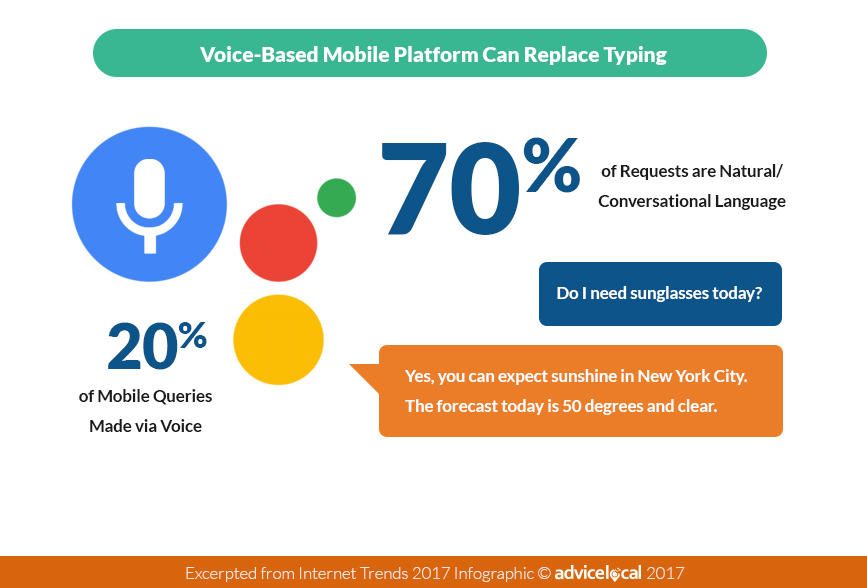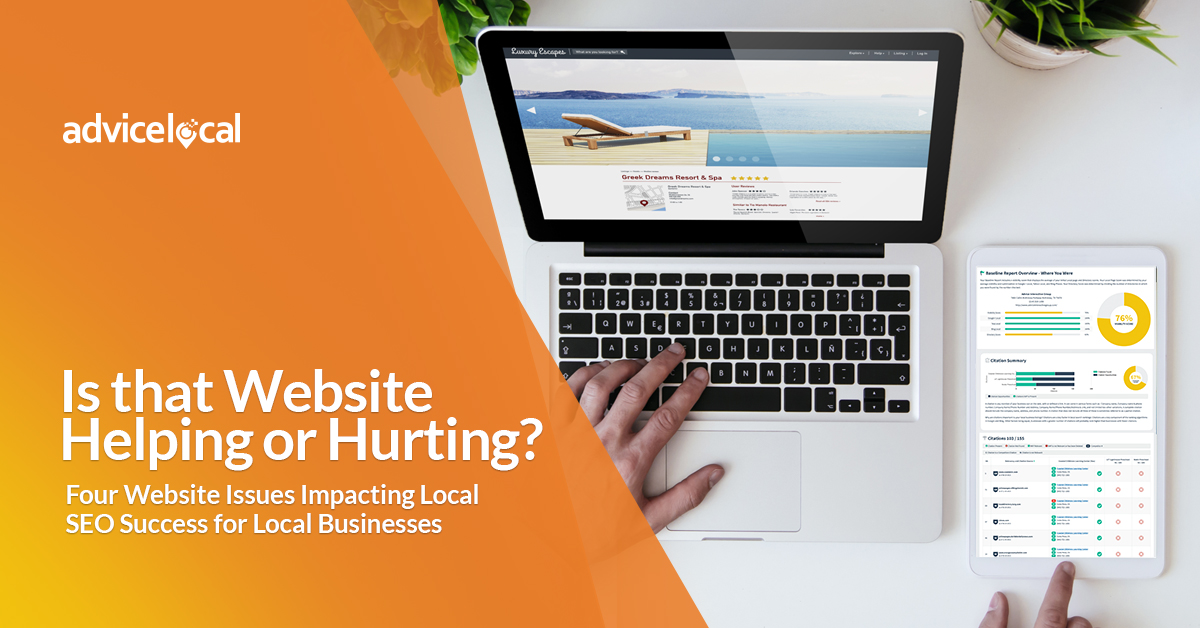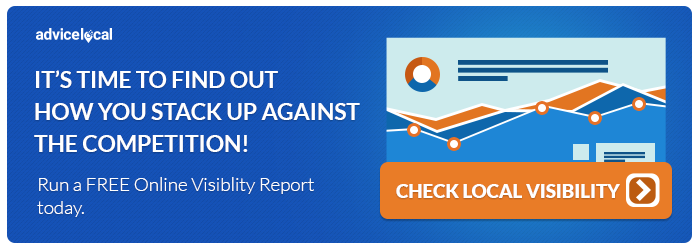Are you trying to place higher in local search results, but noticing that something is holding back success? First, rest assured in knowing you are not the only one having these same struggles. Today, I’m going to cover four common but crucial website issues that are putting a screeching halt on local SEO success for many local businesses!
But First… Some Background
Local Search Association’s Local Media Tracking Study, released in March 2017, reported that 87% of consumers surveyed turn to a search engine first when looking for a product or service. So, do you agree that the majority of consumers start with a search engine when looking for products and services on the internet? I’ll just assume you said yes and move on.
The best way to get these consumers through the doors of a brick-and-mortar business is by capturing their attention online first. Optimizing for the local search ecosystem is an important component to achieve this, but there is more to it than that. This is where the local business website can help or hurt the business in meeting this goal.
Crucial Website Issues that Will Impact Local SEO Success
No local business can afford to have anything damaging their online reputation. It’s simple! Or, is it? Keep reading to found out if any of these local SEO mistakes are plaguing your website or those of your clients.
Development and Design Errors Galore
A local business website represents the business as much as, if not more than, the physical business location. So keeping visitors “clicking on” instead of “clicking away” is a must. Here are common issues that need to be fixed ASAP:
- Slow loading pages and posts – Don’t forget to optimize those images, too. Besides too many calls out and scripts in the head, images can really bog down the server and slow load time.
- Not being mobile-friendly – Do I really need to even say this to you? I hope not!
- Website looks “spammy” – Not sure if this is an issue for you? Check to see if your website features any of these characteristics.
- Broken links – Fix those 404 errors and setup 301 redirects on pages that have been deleted.
Another issue that needs more than just a bullet is typos, spelling and grammatical errors. These errors may seem small, but they will keep search engines and consumers away. Instead of instilling trust, they instill something much worse.
Useless, Irrelevant Content
Creating content just to be creating content is useless and pointless. There, I said it!
Relevant, quality content is one of the more important aspects of local SEO. Search engine algorithms detect irrelevant and poor quality content, so a business should never ever have content on the website that is there just because they need filler.
The content should have a clear purpose, provide value and demonstrate expertise to the reader. Evaluate each piece of content published and ensure it meets the E-A-T (expertise – authoritativeness – trustworthiness) standard. After all, this is an important component highlighted in the Search Quality Evaluator Guidelines put out by Google.
It’s also important that the website doesn’t appear to be neglected or overlooked by search engines because it’s not publishing new pages or posts, and/or making changes regularly. Be sure there is a solid content marketing plan created and being followed by the business.
Failing to Consider the Consumer
It’s sad, but when a business creates pages for their products and services, far too often they focus on what they want the consumer to know vs. what the consumer actually wants to know about the business.
Understanding a consumer’s wants, needs and deepest desires is how a local business converts prospects into customers.
This is where segmentation, personalization and understanding the consumers’ path to purchase should take priority. If you’re not using Google Analytics or another tool to help answer these questions, fix it immediately!
Lack of Optimization – Voice, Desktop and Mobile Search
That’s a mouth full and probably a bit overwhelming! How can you achieve all three at the same time? Understanding the differences in the search characteristics of a consumer on mobile, desktop or doing a voice search is a good place to start.
Do you speak the same as you type? I know I don’t! Voice searches are more conversational than a desktop search and most of the time, voice queries are stated in more natural language than a typed one. In fact, according to the results revealed in KPCB’s 2017 Internet Trends Report, 70% of requests are made in a natural/conversational language.

At this point, it seems desktop searches are still more structured questions and phrases at this point. Consumers may include phrases like “how to,” “what” or “where” as part of the query.
Not sure if you are aware of this or not, but because of RankBrain, a query where a business may have traditionally always placed first could be bumped further down in search results. This is because Google’s machine-learning AI (RankBrain) delivers search results not based solely on what the consumer searches, but the intent behind the search. While RankBrain doesn’t have a role in every search result delivered at this point, it will eventually. (I heard a rumor a few months ago that it was about 20%, but I can’t seem to find anything to confirm it!)
Optimizing for this can be a real challenge. The main thing here is to be aware of it and make sure the business is producing content consumers actually are searching for vs. content stuffed with keywords and complicated sentences. Writing for the business’ audience will be essential.
You definitely cannot forget mobile search! With consumers spending more than four hours per day on their mobile phones, you can guarantee they are searching here first when they have an “I-want-to-go” moment.
It starts with making sure the business is listed correctly on all the mapping and GPS solutions and doesn’t really ever end. It’s important to ensure the business has detailed optimized landing pages (for each location) that include the business hours, directions, a map to get driving directions and the business phone number.
Beyond that, understanding proximity search is a big deal and with the proximity getting smaller, local businesses cannot afford to have any of their online data incorrect.
There’s More to Local SEO than You Could Ever Imagine
While today I mostly discussed website issues that can impact a business’ local search placement, there is so much more to it! Directories, reviews, data aggregators and bad data are even bigger issues that need to be tackled, too!
You can start by running a free online visibility report for one of the local businesses you represent and see if bad data is impacting their online visibility.





One thought on “Is that Website Helping or Hurting? Four Website Issues Impacting Local SEO”
Comments are closed.